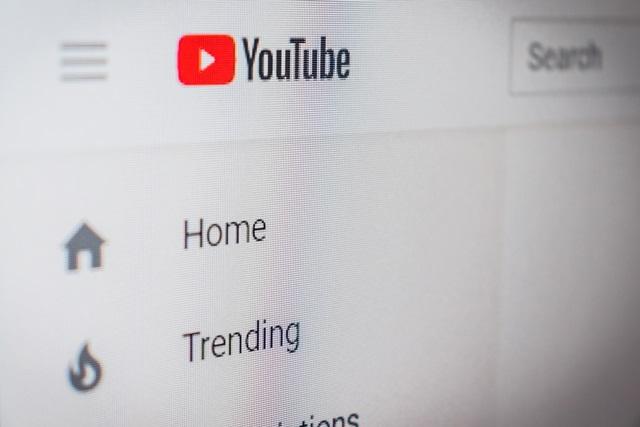
Mastering YouTube RPM Analysis: Unlocking Earnings Potential for Creators
YouTube has evolved from being a simple video-sharing platform into a global powerhouse that offers lucrative opportunities for content creators. With millions of viewers tuning in every day, YouTube has become a platform where creators can showcase their talent, share knowledge, and build a loyal fan base. For many YouTubers, generating revenue through their content has become a significant aspect of their journey. Understanding the ins and outs of YouTube's Revenue Per Mille (RPM) analysis is vital for creators seeking to optimize their earnings potential.
I. Understanding YouTube RPM
A. Definition of RPM
Revenue Per Mille, commonly known as RPM, is a metric that measures a creator's earnings per one thousand views. It is a key indicator of a channel's financial performance and gives creators valuable insights into their revenue generation on the platform.
B. Components of RPM
To comprehend RPM fully, creators need to be aware of its core components:
1. Ad Revenue: YouTube's primary source of revenue for creators comes from advertisements shown before, during, or after videos. Creators earn a portion of the revenue generated from these ads, and RPM incorporates this income into its calculation.
2. Views and Impressions: RPM relies heavily on the number of views and impressions a creator's videos receive. More views and impressions generally lead to higher potential earnings.
3. Click-through Rate (CTR): CTR is the percentage of viewers who click on an ad after watching a video. Higher CTRs can positively impact RPM as they indicate strong engagement with ads.
4. Cost Per Mille (CPM): CPM represents the cost advertisers pay per one thousand ad impressions. Creators with higher CPMs tend to earn more revenue for their content.
II. Benefits of RPM Analysis for Creators
A. Tracking and Optimizing Revenue Performance
RPM analysis provides creators with a clear view of their income over time. By monitoring RPM trends, creators can identify which videos are performing well financially and replicate the strategies that contribute to their success. Furthermore, it helps in spotting underperforming content, allowing creators to refine their approach to maximize earnings.
B. Identifying Revenue Trends over Time
Understanding RPM fluctuations can reveal patterns related to seasonality, viewer behavior, and algorithm updates. This knowledge empowers creators to tailor their content release schedule and topics to align with periods of higher RPM, potentially resulting in increased revenue.
C. Understanding the Impact of Content and Audience Engagement on Earnings
RPM analysis can help creators assess how various content types resonate with their audience and impact earnings. By analyzing RPM alongside other engagement metrics, such as watch time and likes, creators can pinpoint the kind of content that not only captivates viewers but also generates revenue.
III. Steps to Conduct RPM Analysis
A. Collecting Necessary Data
To perform RPM analysis, creators need to gather specific data:
1. Ad Revenue Data: Creators can access their ad revenue information through YouTube's Analytics dashboard, providing valuable insights into their earnings.
2. Views and Impressions Data: YouTube Analytics offers comprehensive data on the number of views and impressions each video receives, essential for RPM calculations.
3. CTR and CPM Data: CTR and CPM data can be accessed through YouTube Analytics and other third-party analytics platforms, giving creators a complete picture of their ad performance.
B. Calculating RPM
RPM can be calculated using the following formula:
RPM = (Estimated Revenue / Total Monetized Playbacks) * 1000
Estimated Revenue: The total revenue generated from ads on the channel.
Total Monetized Playbacks: The number of video views eligible for monetization (i.e., views where ads were shown).
C. Using RPM Data for Insights and Decision-Making
Once RPM is calculated, creators can analyze the data to make informed decisions about their content strategy, advertising placement, and target audience. Creators can experiment with different ad formats, collaborate with brands, and optimize their content to increase RPM and overall revenue.
IV. Factors Affecting RPM
A. Content Type and Niche
The type of content and niche a creator focuses on can significantly impact RPM. Advertisers may be willing to pay more to reach audiences in specific niches, resulting in higher CPM rates for creators in those niches.
B. Audience Demographics and Location
The demographic makeup of a creator's audience and their location can influence RPM. Targeting audiences with higher advertiser demand and engagement potential can positively impact RPM.
C. Seasonal Variations and Trends
RPM may fluctuate throughout the year due to seasonal ad campaigns and viewer behavior changes. Understanding these trends can help creators plan their content and promotions strategically.
D. YouTube Algorithm Changes and Policy Updates
YouTube's algorithm and advertising policies can affect RPM. Creators must stay updated on platform changes to adapt their strategies accordingly.
V. Strategies to Increase RPM
A. Improving Video Quality and Production Value
High-quality, engaging content tends to attract more viewers and advertisers. Investing in better production values can lead to increased viewer retention and, subsequently, higher RPM.
B. Optimizing Ad Placements and Formats
Experimenting with different ad placements and formats can impact CTR and, ultimately, RPM. Creators should test different ad options to find the most effective ones for their audience.
C. Enhancing Audience Targeting and Engagement
Understanding the audience's preferences and tailoring content to their interests can lead to higher engagement, resulting in increased CTR and, consequently, higher RPM.
D. Collaborating with Brands and Sponsors
Working with brands and sponsors can provide additional revenue streams for creators, particularly if the brands align with the creator's niche and audience.
VI. Case Studies
A. Successful YouTube Creators and Their RPM Strategies
Analyzing the RPM strategies of successful YouTubers can provide valuable insights into how RPM optimization can be achieved in various niches and content types.
B. Analysis of RPM Growth over Time
Studying RPM growth over time for specific creators can reveal the impact of strategic changes and audience engagement efforts on revenue generation.
VII. Tools for RPM Analysis
A. YouTube Analytics
YouTube's built-in Analytics dashboard offers creators a wealth of data to analyze RPM and other performance metrics.
B. Third-Party Analytics Platforms
Various third-party tools provide advanced analytics and insights, enabling creators to gain a deeper understanding of their RPM performance.
VIII. Challenges and Limitations of RPM Analysis
A. Incomplete Data and Fluctuations
RPM analysis may face limitations due to incomplete data, especially for newer creators with fewer views and revenue data points. Additionally, RPM can be influenced by fluctuating ad rates, making it challenging to predict consistent revenue patterns.
B. Dependency on External Factors
RPM is subject to changes in the advertising industry and YouTube's policies. Creators must adapt to these external factors to maintain consistent revenue streams.
IX. Conclusion
Mastering YouTube RPM analysis is crucial for creators aiming to unlock their earning potential on the platform. By understanding RPM's components, conducting thorough analysis, and implementing strategic decisions, creators can optimize their revenue and build a sustainable career on YouTube. Embracing data-driven insights and staying adaptable to industry changes will empower creators to thrive in the dynamic world of online content creation.


